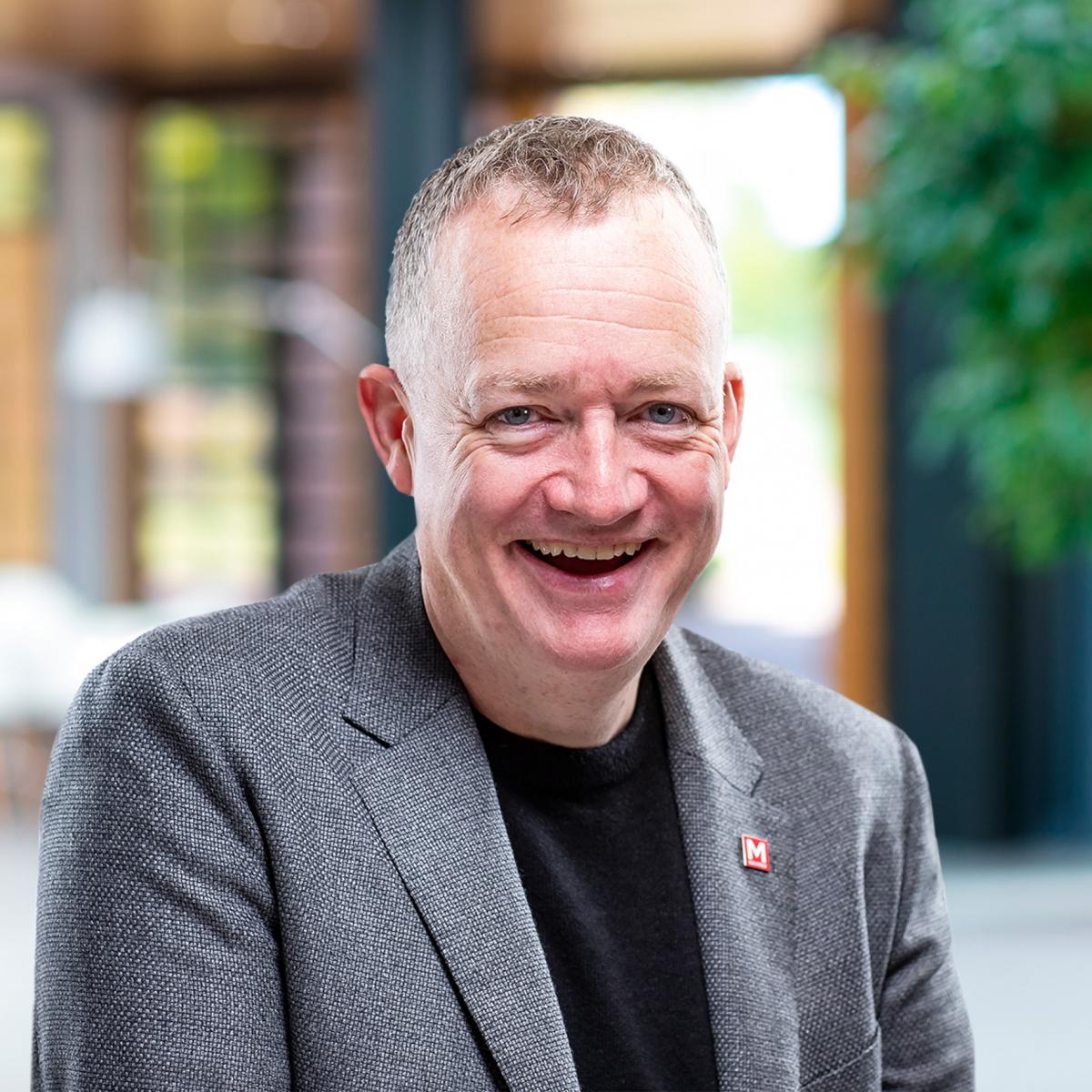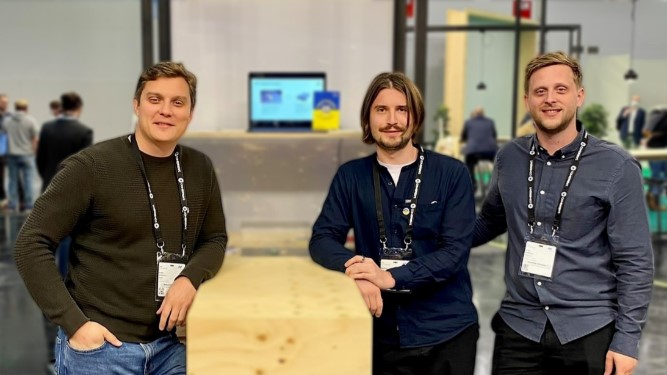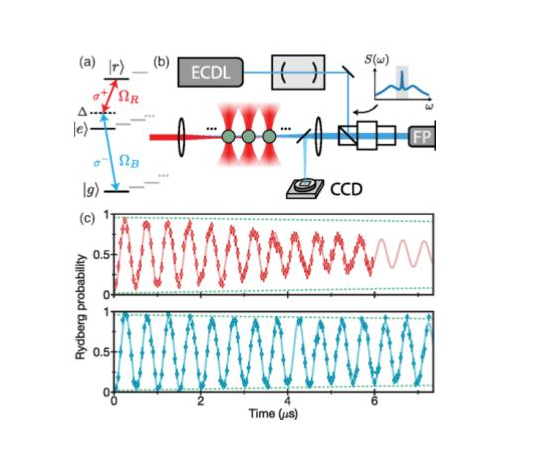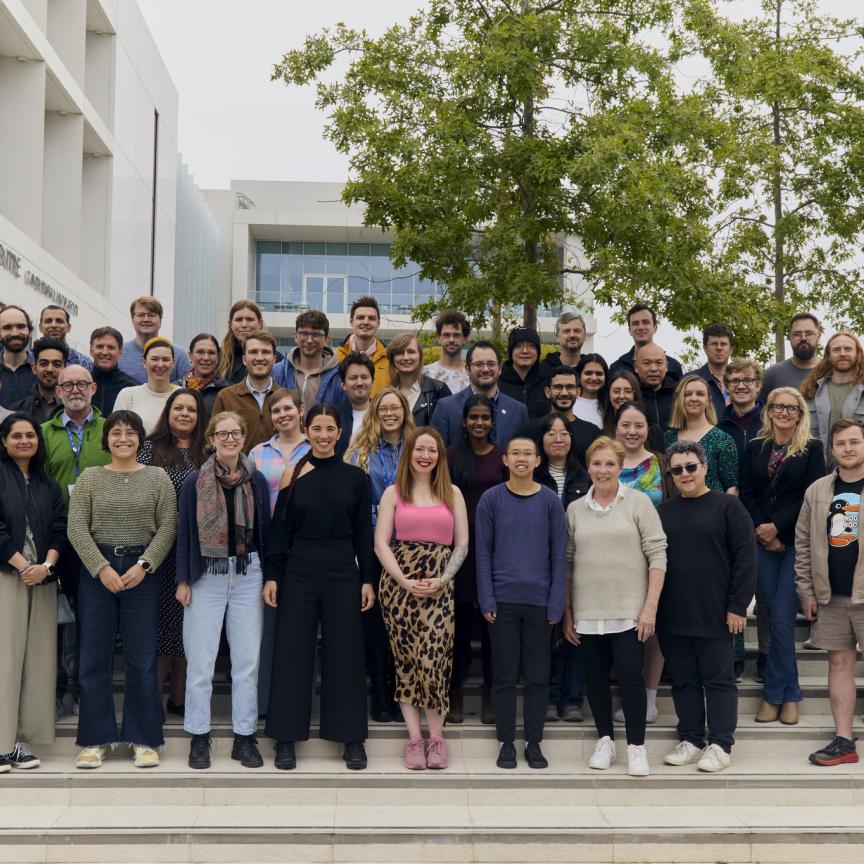Global investment in quantum technologies is generating a vibrant ecosystem of research groups, spin-off companies and major industry players that are all hoping to harness the power of quantum physics for commercial applications. Governments around the world have committed some $20bn to quantum programmes over a decadal timeframe, while companies are ramping up their R&D efforts and venture capitalists are scrambling to seize a slice of the flourishing start-up sector. All are pinning their hopes on a future market for quantum hardware and software that industry analyst Research and Markets predicts will reach more than $3.5bn by 2030.
That thriving quantum marketplace was on full display at the UK's National Quantum Technologies Showcase, held at London's QEII Centre in November, where more than 60 exhibitors demonstrated practical devices and systems for applications ranging from exquisitely precise sensors to quantum computers. Many of them have been buoyed by funding provided through the UK's National Programme for Quantum Technologies (NPQT), which since 2014 has supported technology hubs in quantum sensing, imaging, communications, and computing. The programme's co-ordinated activity across the academic and commercial sectors has spawned almost 50 start-up companies so far, with private-sector support for quantum technologies expected to reach more than £700m by 2025.
Underpinning many of the innovative hardware solutions on display were precise photonic technologies that make it possible to create, control and measure quantum states and properties. “Photonics is the basic platform for quantum systems development,” says Thierry Robin of Tematys, a French technology consultancy company. “The future of quantum is reliant on the development of new photonics components, and there are great opportunities for the optics and photonics industry to participate in this sector.”
Indeed, suppliers of photonic technologies are already enjoying a boost from strong demand within the research community. In a report released earlier this year, TEMATYS estimates that the optics and photonics market for building quantum systems was worth more than €210m in 2021, and forecasts that it will more than double by the end of the decade to reach almost €530m. Within that overall market, the biggest demand is for high-performance lasers, with quantum applications accounting for about two thirds of all lasers sold into the academic sector in 2021.
One company that is taking advantage of the emerging quantum economy is M Squared, a Scottish developer and manufacturer of photonics and quantum technologies. Speaking to Electro Optics at the showcase event, the company's CEO and founder Graeme Malcolm explained that the company was originally set up in 2006 to build laser systems for high-precision manufacturing processes: “We were targeting applications that depend on the purity of the light, particularly in sectors such as metrology and the semiconductor and display industries. But, even at the start, we were optimising our laser technology to support research in atomic physics, and we have long understood the linkages between those areas.”

Graeme Malcolm, CEO and founder of M Squared, says that developing integrated quantum solutions is a crucial strategy for delivering continued business growth (Courtesy: M Squared)
However, it was the launch of the UK's quantum programme in 2014 that crystallised the idea that the emerging quantum sector could be a commercial opportunity, according to Malcolm.
“The vision set out at the start of the UK’s quantum programme was critically enabling for us. We could see things happening in our business that were steering the development of our light sources, but the open forums at the start of the programme showed us just how far we could go. It was at one of those meetings that I realised we should be investing in the quantum business.”
M Squared specialises in developing laser systems for instrumentation that exploits the quantum nature of ultracold atoms and ions. As well as using lasers to cool the particles close to absolute zero, these set-ups need laser light that is precisely tuned to the energy transitions inside the atoms to manipulate and control their quantum behaviour.
The first step for the company was to ensure that its core laser technology, the SolsTiS platform, could be continuously tuned over the wide range of wavelengths needed to access the energy transitions in different atomic species. “The sophistication and beauty of the transitions inside an atom require both a purity of light and a certainty of that light,” says Malcolm. “A lot of that comes down to the technical noise performance of the laser, and so we have exploited schemes such as phase locking to achieve the stability and accuracy needed in these applications.”
The company's entry point into the quantum market was through early initiatives to build quantum clocks – one of the first technologies to harness quantum effects to achieve a performance advantage. “The clock builders pioneered a change in technology that allowed us to develop our lasers for that application,” says Malcolm. “Once it was shown that a quantum clock could be more accurate than the previous state-of-the-art, we became really excited about the opportunities for our company to play a key role in enabling the quantum capabilities of ultracold atoms.”
While high-performance lasers are essential tools for building and operating quantum systems, other photonics devices are starting to make the transition from academia into the commercial sector. For example, at Aegiq, a start-up that was spun out from the University of Sheffield in 2019, the focus has been on developing an efficient and reliable source of single photons for applications in quantum communications, sensing and computing.

Aegiq was formed in 2019 to commercialise a single-photon source based on technology developed at the University of Sheffield. The company's co-founders are (left to right): Andrii Iamshanov, Maksym Sich, Scott Dufferwiel (Courtesy: AegiQ)
“One of the key challenges in making true single-photon sources is ensuring that photons are emitted whenever they are needed with complete certainty, and that the system emits exactly the same photon every single time,” says Max Sich, the company's CEO and co-founder. “The limiting factor in many quantum applications is the efficiency of the sources.”
The company's inaugural iSPS-925 device, launched at the quantum showcase, solves those challenges to deliver indistinguishable single photons with a best-in-class efficiency of greater than 50%. The device, which exploits photonic structures and quantum dots embedded on a semiconductor chip, operates over a range of wavelengths and can be coupled to an optical fibre for easy integration with other components and systems.
However, it has taken Aegiq some time to create a commercial product from the original academic research. “In deep tech, you need to put some extra effort,” comments Sich. “Taking the solution from the lab to a commercial product needed proper engineering to achieve a reliable manufacturing process that achieves good yields. Some new physics happened along the way but, ultimately, it has all been about the product development.”
The benefits of collaboration
In making that tricky transition, Aegiq has been bolstered by support provided through the NQTP. As well as receiving funding for the company's development programme, being part of such a co-ordinated activity has fostered important collaborations, both with suppliers and potential customers. “The NQTP has played a major role in establishing the company, and has really helped to accelerate the development of our product,” comments Sich. “It's more than just the money. It has unlocked a lot of the supply chain, and has enabled collaboration as well as engagement with end users.”
While the first release from Aegiq is aimed mainly at the R&D market, the company plans further product development to broaden its portfolio of foundational quantum-photonics technologies and expand into commercial end-user applications such as quantum communications and cybersecurity. But any future development will be done with scalability and integration in mind. “Our next step will be moving towards enabling building efficient quantum networks and computers,” says Sich. “It’s all about putting these different technologies together to create integrated photonics solutions.”
Other photonics companies have seen the benefits of integrating core photonics technology into a commercial product. At QLM Technology, for example, a single-photon detection scheme originally developed at the University of Bristol has been transformed into a camera system that can image and measure the emissions of greenhouse gases. With its first commercial system already released, QLM is now working as part of a consortium funded by the NQTP to engineer and validate a solution that oil and gas companies can adopt to continuously monitor emissions of methane and carbon dioxide from their production operations.
At M Squared, meanwhile, the development focus has shifted towards creating quantum systems based on the company’s core laser technology. “It's very difficult to replace the value we add if we don't move up to the next level,” comments Malcolm. “By integrating up and delivering some system-level capability, we can continue to add value and grow our business.”
M Squared has worked with the University of Strathclyde to develop the Maxwell quantum-computing platform, shown here during commissioning works (Courtesy: M Squared)
In 2017, the company launched its first integrated product, a quantum gravimeter developed in collaboration with the University of Birmingham that can measure the acceleration due to gravity with extreme sensitivity. Two SolsTiS lasers inside the system are used to control the wave-like properties of atoms cooled close to absolute zero, essentially creating an atomic version of an interferometer. The sensitivity of the measurements to changes in mass allows the system to be used to detect hidden objects and subterranean cavities, such as underground tunnels used for water and electrical supply.
The company has also launched a quantum accelerometer that again uses atom interferometry to enable navigation without the need for satellites. Developed in collaboration with Imperial College London, the system exploits a phase-locked SolsTiS laser to achieve the extremely low noise performance required to achieve the sensitivity needed to pinpoint the position of moving vehicles. A commercial version of an optical lattice clock is also being developed with the University of Birmingham, with the aim of building a compact and transportable system that achieves a market-leading frequency uncertainty of below 10–17.
Now, in its most ambitious project to date, M Squared has revealed its Maxwell platform, a commercial quantum-computing system based on neutral atoms. The company developed the core architecture of the platform in close collaboration with the University of Strathclyde through an EPSRC programme called Prosperity Partnership SQuAre, which is developing neutral-atom hardware and the associated algorithms.
Neutral atom quantum computing
According to Malcolm, the Maxwell platform benchmarks against the best neutral-atom quantum computing systems in the world. “Our strategic collaboration with the University of Strathclyde has given us access to world-class breakthrough physics, with some of the formative neutral-atom systems being developed in the lab set up by Jonathan Pritchard,” says Malcolm. “We have adapted our laser systems to support that work, and have brought the engineering and product development expertise needed to produce a commercial system.”
Malcolm says that the initial release of the platform demonstrates 100 qubits, while the team has a clear route to scaling the number to 400. “The power of a quantum computer increases exponentially with the number of qubits, but so do the errors,” he explains. “We saw neutral atoms as having substantial advantages in that balance between increasing the qubit count and maintaining the fidelity and coherence needed to minimise the losses that lead to errors.”
While quantum computers exploiting trapped ions or neutral atoms require high-performance lasers to control and manipulate the quantum states, UK start-up ORCA Computing is building an all-optical platform that exploits photons as the information-processing resource. "Photons don't interact with the environment, which means they are not affected by the decoherence and noise that usually kills quantum computers," explains Kris Kaczmarek, the company's Head of Product. "Our technology allows quantum computers operating at room-temperature to be built using optical fibre and industry-standard components."
ORCA is one of eight partners in the Discovery consortium, a £10m project supported by the NQTP and led by M Squared to accelerate the development of commercial quantum computers. “The UK’s quantum programme has done a really good job of funding the early-stage development needed to underpin a formative industry, and it has generated a thriving ecosystem,” says Malcolm. “It’s great to see such a breadth in capability after a relatively short amount of time, and at M Squared we are motivated to step up and drive that journey towards commercialisation.”
Sponsored: To quantum and beyond...
As quantum phenomena is challenging to “see” without strictly being aware of its presence, it’s easy for its abundance in our daily lives to go unnoticed. Even Richard Feynman’s memorable words say: “Nature isn’t classical, dammit, and if you want to make a simulation of nature, you’d better make it quantum mechanical.”
As we face a continuous demand for devices and technology with new and improved features, this requires that the core building blocks that are responsible for device functionality and performance be revised and better understood. This takes us to the “first quantum revolution” owing to the revelations of well-known scientists including Einstein, Schrödinger, Planck, Heisenberg and Bohr to name a few. We can now interpret the periodic table and electronic wave functions thanks to them opening the portal to the quantum realm. It turns out that the functionality of many devices and applications we use on a regular basis such as transistors, GPSs, lasers, semiconductors and MRIs, is largely governed by quantum mechanical effects and its understanding.
The main challenge that scientists have been facing for years, is the ability to control individual particles and their interactions. This limitation is mainly due to short coherence times of quantum qubits - the quantum information encoder1. However, thanks to advancements in research, it is now possible to precisely manipulate individual particles and hence develop new and improved technologies and devices that fully make use of what quantum mechanics truly has to offer. We now live in the era of the “second quantum revolution” which is more commonly known as quantum technology. This massive leap has led us to a place where we now see rapid progress in areas such as quantum sensing, quantum computing, quantum simulation and quantum communication. These quantum technologies have now come to a stage where they are ready to leap into commercial products -- some, such as random number generators – have already hit the market and have gained rapid popularity for their unbeaten level of security.
A leap for quantum leap
Long-lived quantum memories are highly desirable for quantum simulation and information processing, yet still challenging to achieve. However, quantum research scientist Harry Levine and a team of researchers from academic institutions in the USA and France took the quantum leap of leaps and managed to address the coherence limitation by reducing laser phase noise and achieving controllable interactions between atoms1. Improving this coherence imperfection is vital for the progression of high-quality quantum simulations, and so they made it their goal to achieve just that. This led them to find a way to enable quantum control of Rydberg atom qubits, which was possible by coherent coupling to excited Rydberg states.
The experimental procedure involves the use of optical tweezers to prepare and position cold Rubidium-87 atoms, and the application of a laser field to then excite the atoms into their Rydberg states. This is achieved via a two-photon excitation process that makes use of a 420nm Moglabs laser for the initial excitation, and a 1013nm Moglabs laser to couple the excited atoms into their Rydberg states. By employing an on-off play of the tweezer potentials, it is possible to excite some of the atoms whilst some remain in their ground state — this allows ground state atoms to be recollected by the tweezers whereas the Rydberg atoms can be redirected by the laser beams1. A reference CCD camera is used to ensure that laser beam alignment is well-centred onto the atoms in order to minimise sensitivity to any fluctuations.

Experimental set-up depicting single-qubit manipulation using optical tweezers and ECDLs1
Such transitions require highly specific wavelength sensitivity and narrow linewidths, which is exactly what external-cavity diode lasers (ECDL) from Moglabs aim to provide. These lasers are available through Photonic Solutions in the UK and Ireland and are equipped to perform a unique locking technique known as the Pound-Drever-Hall (PDH) lock. This locking technique strongly reduces noise at frequencies below the effective bandwidth of the lock, enabling bandwidths as narrow as <1 kHz1, 3. This ensures high frequency stabilisation, and together with wide tunability, provides the ‘strict’ requirements many quantum applications need. With this technical upgrade in place, Harry Levine et al have managed to demonstrate long-lived Rabi Oscillations of τ = 27 µs and single-qubit control1, which will open new doors for scalable quantum simulation and computation. High bandwidth frequency modulation of Moglabs Cateye ECDLs have also been demonstrated after the recent research of S. Palmer et al, who confirm that quantum applications continue to push the requirements for narrower linewidth and faster frequency control2 – and Moglabs is here to help you take your next quantum leap.
References
[1] Levine, Harry, et al. "High-fidelity control and entanglement of Rydberg-atom qubits." Physical review letters 121.12 (2018): 123603.
[2] Palmer, Sonya, et al. "High bandwidth frequency modulation of an external cavity diode laser using an intracavity lithium niobate electro-optic modulator as output coupler." APL Photonics 7.8 (2022): 086106.
[3] MOGLabs, “Pound-Drever-Hall Locking with the FSC”
Further information
For more information on our Moglabs products, please email Photonic Solutions on sales@photonicsolutions.co.uk.

